One of the aircrafts coming in WW2 Wings of Glory is the Supermarine Spitfire, the only Allied fighter aircraft in WW2 to fight in front line service from the beginnings of the conflict, in September 1939, through to the end in August 1945. Originally designed to be a short-ranged interceptor, the airframe proved able to take increasingly powerful engines and perform in a wide variety of roles, with 19 marks and 42 sub-variants produced during the war.
The model featured in the WW2 Wings of Glory Battle of Britain Starter Set and in a Squadron Pack is the Mark 1, which first entered squadron service in August of 1938. There were considerable delays of this fighter at first, since the Supermarine company was already overloaded making other planes, to the point where the Air Ministry actually sugge sted the Spitfire program be dropped! Eventually, its production was dispersed to several manufacturers and the Spitfire was coming into general use as the war began, with the “Phony War” period being invaluable for getting more squadrons equipped - the Spitfires in our game, from 610 Squadron, were built by Vickers Supermarine, at Eastleigh.
From the beginning, Spitfires were admired for their beautiful lines and excellent performance. The Mk.I combined great speed and climb with excellent maneuverability to produce a war-winning plane. During the 1940 Battle of France, there was great friction between the allies as the French demanded more fighters from the British and noted that there were never any Spitfires based in France. This was because they were being saved to protect the U.K. Hurricanes were still the more common fighter during the Battle of Britain (from July to October 1940) but Spitfires received more public acclaim. While Hurricanes claimed more German losses, Spitfires showed a lower attrition rate and a higher victory-to-loss ratio, even though, when Fighter Command had the choice, they sent Hurricanes after the bombers and Spitfires engaged German fighters. The Spitfire versus Messerschmitt Bf. 109E has become a classic confrontation of near equals - which makes it perfect for the Starter Set.
The Spitfire was not without problems, struggling with the guns freezing and engine cut-out in negative G maneuvers (which the fuel-injected Bf. 109 learned to exploit.) During the battle, a few Spitfires experimented with 20mm cannons but with very mixed results.
After the Battle of Britain, the Spitfire superseded the Hurricane to become the backbone of RAF Fighter Command, and saw action in the European, Mediterranean, Pacific and the South-East Asian theatres. Spitfires were flown by every Allied nation, including about 1,000 sent to the Soviet Union and the U.S. 4th Fighter Group, which was made up from the “Eagle Squadron” - American pilots which had been flying with the RAF before Pearl Harbor. Much loved by its pilots, the Spitfire served in several roles, including interceptor, photo-reconnaissance, fighter-bomber, and trainer. Over 50 of the planes are still flying today, allowing us to hear the distinctive drone of a Merlin engine.
Spitfire in Wings of Glory
The Spitfire Mk.1 in Wings of Glory brings that sweet balance of speed and maneuverability that made it such a joy to its pilots. Historians will be pleased to see special (optional) cards which capture the problem of the carburetor (“Sputtering Engines”) as well as the pilot skill that compensated for the problem (“Reverse Diver”). Other cards cover things like “Lucky Pilot” or quick shooting.
The Battle of Britain Starter Set presents two versions of the Supermarine Spitfire, piloted by the sergeants Aubrey Cyril Baker and Douglas Frederick Corfe, both from the 610 Squadron. The Squadron Pack features a third Spitfire with five options to customize it as different aircrafts of this same unit.
Aubrey C. Baker
Aubrey Cyril Baker joined the RAF in 1935 as ground crew, and in 1939 he was accepted for pilot training in 1939, rejoining 610 Squadron as a pilot on July 27th, 1940. On August, 24th, flying a Spitfire, Baker claimed a Me,109 destroyed, and five days later he shot down another Me.109, and likely a Me.110 and a Dornier17. On August 30th, he claimed another Dornier 17 destroyed, unconfirmed. He was posted to the 41 Squadron in late September. In April 1941, he was commissioned and in February 1942 he joined the 112 Squadron, in the Western Desert. At this unit, he destroyed a Me.109 in June 6th, and a Ju88 on July 19th. He was awarded the Distinguished Flying Cross in December 4th, 1942, after completing his operational service. He was released from the RAF in 1946 as a Flight Lieutenant, and died in 1978.
His Spitfire in Wings of Glory comes with the special card “Daredevil”, stating that the pilot may perform two steep maneuvers in succession.
Douglas F. Corfe
Douglas Frederick Corfe joined the Auxiliary Air Force in 1936 to serve on the ground staff of the newly-formed 610 (County of Chester) Squadron at Hooton Park. In late 1938 he transferred to the RAFVR and started his pilot training. He flew Hurricanes in France with 73 Squadron and rejoined 610 Squadron in July 1940. He was with this unit through the Battle of Britain, being credited with several planes shot down or “probable” though also being shot down at least twice himself. After recovering from injuries, Corfe went to 229 Squadron on the HMS Furious for transfer to Malta. He flew to Malta in late April, 1941 and was shot down and killed after a week of heavy combat there.
Corfe’s Spitfire presents the skill card “Lucky Pilot", allowing the player to ignore a single damage counter after drawing and seeing it, once per game.
610 Squadron
610 Squadron is an interesting story. Formed in 1936 as an “Auxiliary Air Force” squadron, it was first equipped as a “day bomber” unit before switching to fighters in 1939. While all AAF units were “part-time fliers,” 610 Squadron included some very good pilots indeed, including ex-RAF and test pilots for local companies. It was also noteworthy for actively encouraging ground crew to become NCO pilots, which is the case with both pilots in the Starter Set. Operating out of Biggin Hill, the unit helped fly cover for the Dunkirk evacuation and then was heavily involved in the early days of the Battle of Britain before being rotated to Northumberland, in August, to recover from heavy losses. In 1941 the squadron joined the “Tangemere Wing” under Douglas Bader.
The Spitfire of the 610 Squadron includes the special card “Perfect Aim”, so that the pilot may choose to have his opponent take an additional damage counter, even if he did not shoot at the same airplane in the previous firing phase.
Squadron Pack Pilots
Flight Commander Edward Brian Bretherton Smith, one of the founding members of 610, was involved in the Dunkirk operation (where he shot down a He-111) and scored four confirmed kills in the Battle of Britain before being shot down and wounded. After recovery, he was involved in various training and staff assignments, including preparing soldiers and agents for parachuting into occupied Europe. He finished the war with the rank of Wing Commander and died in 2013 on "Battle of Britain Day."
Known as “Big Bill Smith,” Sgt Leader Andrew Thomas Smith took command of the squadron on May 29, 1940. He was heavily involved in the fighting and crash landed and saved a Spitfire on July 10. He tried to bring another badly shot up Spitfire home 15 days later, but lost control as he was reaching the airfield and crashed. He was 34.
Sgt Bernard George Derry Gardner served with 610 in the Battle of Britain. He was credited with 4 enemy planes destroyed before being wounded on September 14th after combat with Bf. 109's. He transferred to 75 Signals Wing and was shot down by “friendly” AA fire June 28th 1941.
Pilot Officer Peter Litchfield represents a different kind of pilot. He was rushed through training right after the war began and commissioned in December, 1939. He joined 601 Squadron that same month. On July 18th, 1940, after damaging a Bf. 109 over Dover, he was shot down over the Channel north of Calais by a Bf. 109 from Gruppe II of Jagdgeschwader 51, flown by Hauptmann H. Tietzen.
Flt Lft William Henry Cromwell Warner joined No 610 Squadron in 1937. He was made B Flight commander (Acting Flight Lt) on July 26th. He is credited with two “probable” on Bf.109s. Warner's Spitfire was shot down in combat with Bf. 109s on August 16th, 1940, off Dungeness. He died, aged 21.
Information sources: "Spitfire, a Complete Fighting History", A. Price; "Spitfire: The Illustrated Biography", J. Glancey; History of RAF Formations, 610 (County of Chester) Squadron - A Brief History, 610 (County of Chester) Squadron - Battle of Britain Pilots, Battle of Britain London Monument, “Daily Telegraph” - various obituaries, "Royal Air Force (Volunteer Reserve) officers, 1939-1945", "Battle of Britain: Casualties R.A.F. or Fleet Air Arm during the period 10 July to 31 October 1940", “Men of the Battle of Britain”, Wynn, Kenneth.

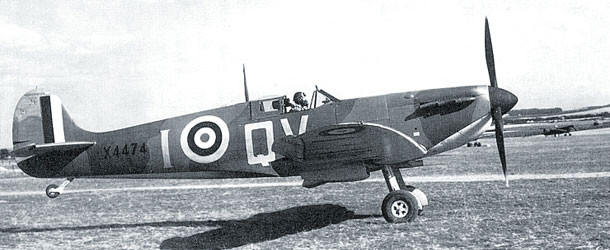
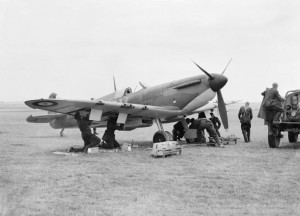
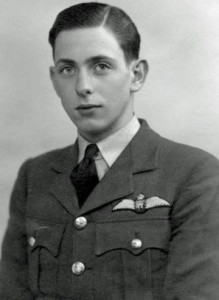
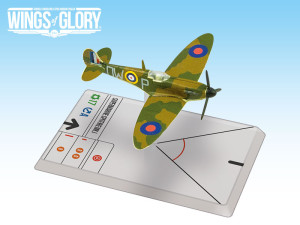
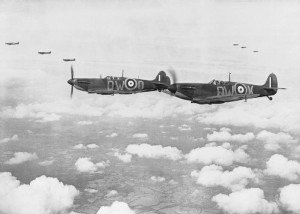


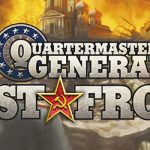





Follow Us on